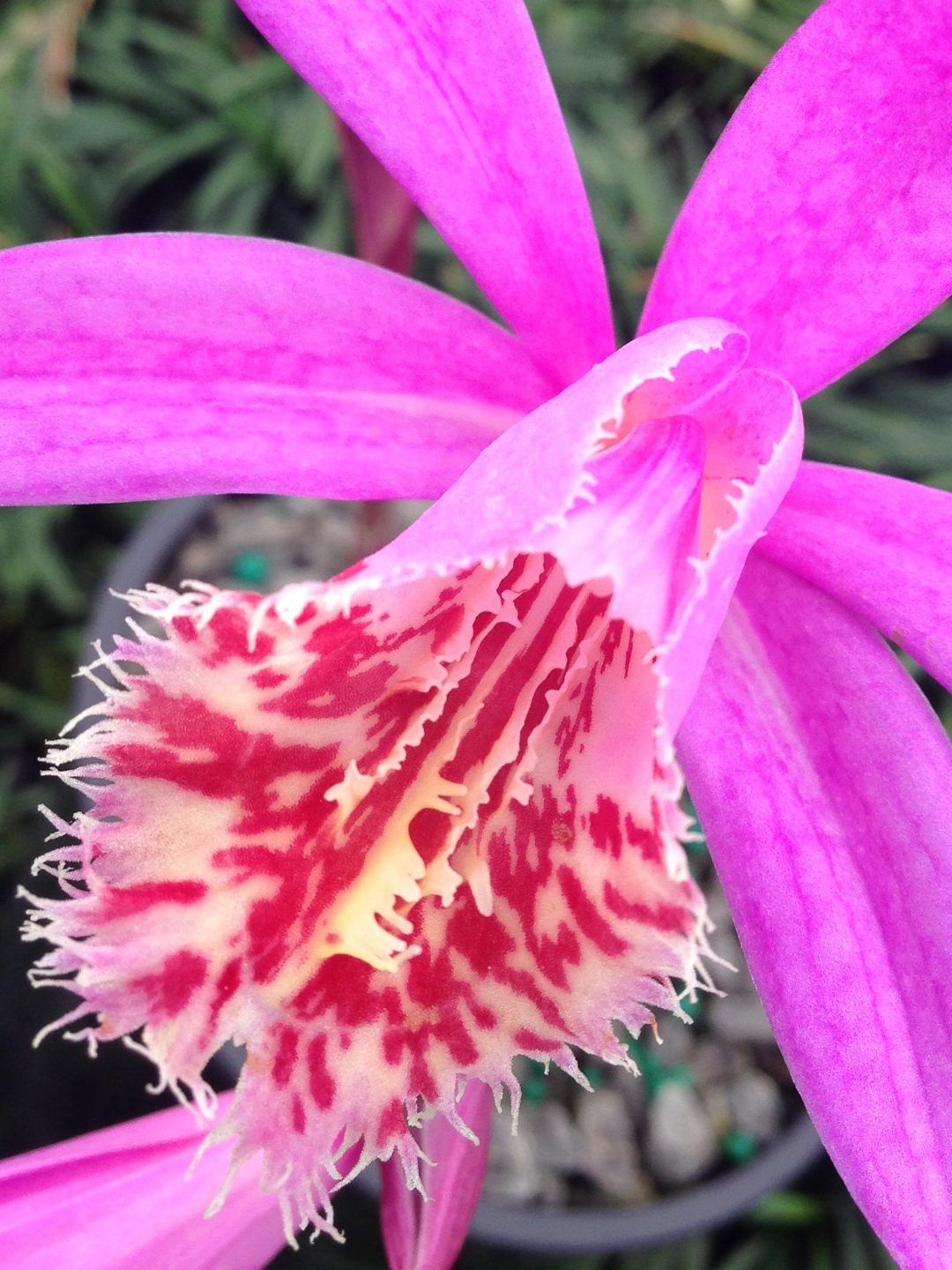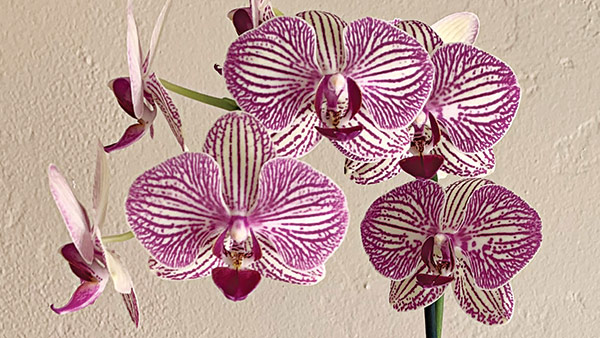
At his day job, Eric Lucas works for Buschholz Nursery, a wholesale grower in Gaston, Ore., that supplies garden centers all over the United States and Canada. He grows all sorts of amazing plants, including a particularly beautiful and unusual type of orchid that is putting on spectacular bloom for him right now: pleiones.
Pleione orchids are a terrestrial orchid, meaning they grow on the ground rather than on the branches of trees like many of the familiar tropical orchids. They also come from a climate with frosty weather in winter, and some selections can grow outdoors all year in Zone 9 or warmer. In colder climates, they are best moved into a cool spot like a porch or garage for the winter, where they’ll be cool and dry during their winter dormancy but sheltered from hard freezes.
I asked Eric how he grows his orchids, and here’s what he had to say:
Pleione are actually very easy to cutlivate and the reward far greater than the effort put into them. We use a soil mix that’s about 50% medium fresh fir bark, 10% compost, and 40% horticultural pumice. It needs to be well drained but moisture retentive. Pleione like to be completely dry during dormancy (end of October through mid-February). Watering can commence from then on to keep the medium moist but not wet. The pleione should be fertilized with a time-release fertilizer at that time as well. More cultural information can be found on the web.
And wow . . . if you get the conditions right, you are rewarded with these incredible flowers! In spring, once the weather begins to warm, each plant produces massive, intricate blooms that are nearly as big as the entire rest of the plant. There are many hybrids and selections, each with more beautiful flowers than the last.
 Pleione ‘Oriental Splendor’
Pleione ‘Oriental Splendor’  ‘Vesuvius’
‘Vesuvius’ ‘Wackernagel Pearl’
‘Wackernagel Pearl’  An unknown cultivar.
An unknown cultivar.  Pleione orchids blooming in the lush, green garden!
Pleione orchids blooming in the lush, green garden!
Have a garden you’d like to share?
Have photos to share? We’d love to see your garden, a particular collection of plants you love, or a wonderful garden you had the chance to visit!
To submit, send 5-10 photos to [email protected] along with some information about the plants in the pictures and where you took the photos. We’d love to hear where you are located, how long you’ve been gardening, successes you are proud of, failures you learned from, hopes for the future, favorite plants, or funny stories from your garden.
If you want to send photos in separate emails to the GPOD email box that is just fine.
Have a mobile phone? Tag your photos on Facebook, Instagram or Twitter with #FineGardening!
You don’t have to be a professional garden photographer – check out our garden photography tips!
Do you receive the GPOD by email yet? Sign up here.

















Comments
Has to be quite a kick, Eric, to have such exotic voluptuous beauties growing in one's very own garden. I don't think I would ever stop being amazed as they came into bloom. With your emphasis on keeping them dry during the winter months, I'm assuming you don't leave yours in the ground...correct?
These must be breathtaking in the garden and so much fun to grow, Eric. Do you leave them potted and move them around or plant and dig them? Could they survive an unheated greenhouse in the winter in coastal WA? Thanks for sharing.
After checking with my orchid sources, it should survive as long as it doesn't go much below freezing, and has coolish summers. It looks as if these are Asian orchids that grow at higher altitudes, generally speaking. I'm surprised by how large this genus is. It's not an orchid we can grow here in the midwest easily, because it grows too warm to survive our winters, and too cool to like our greenhouses.
Watching the spring flowers spread the flowers to help me relax my life. I will plant the orchid flowers in the garden to the spring to see the most beautiful flowers hoa khai truong
Log in or create an account to post a comment.
Sign up Log in